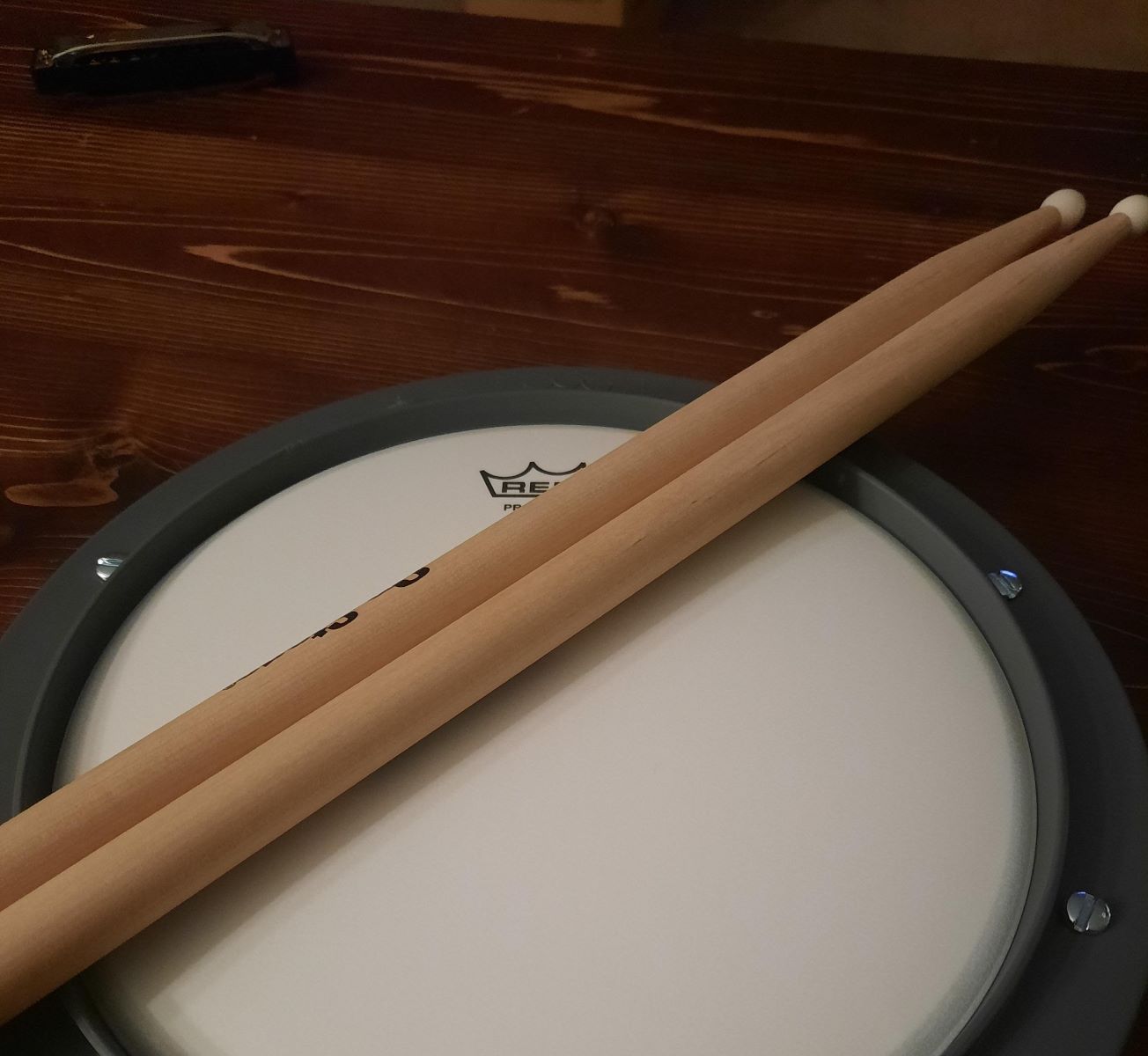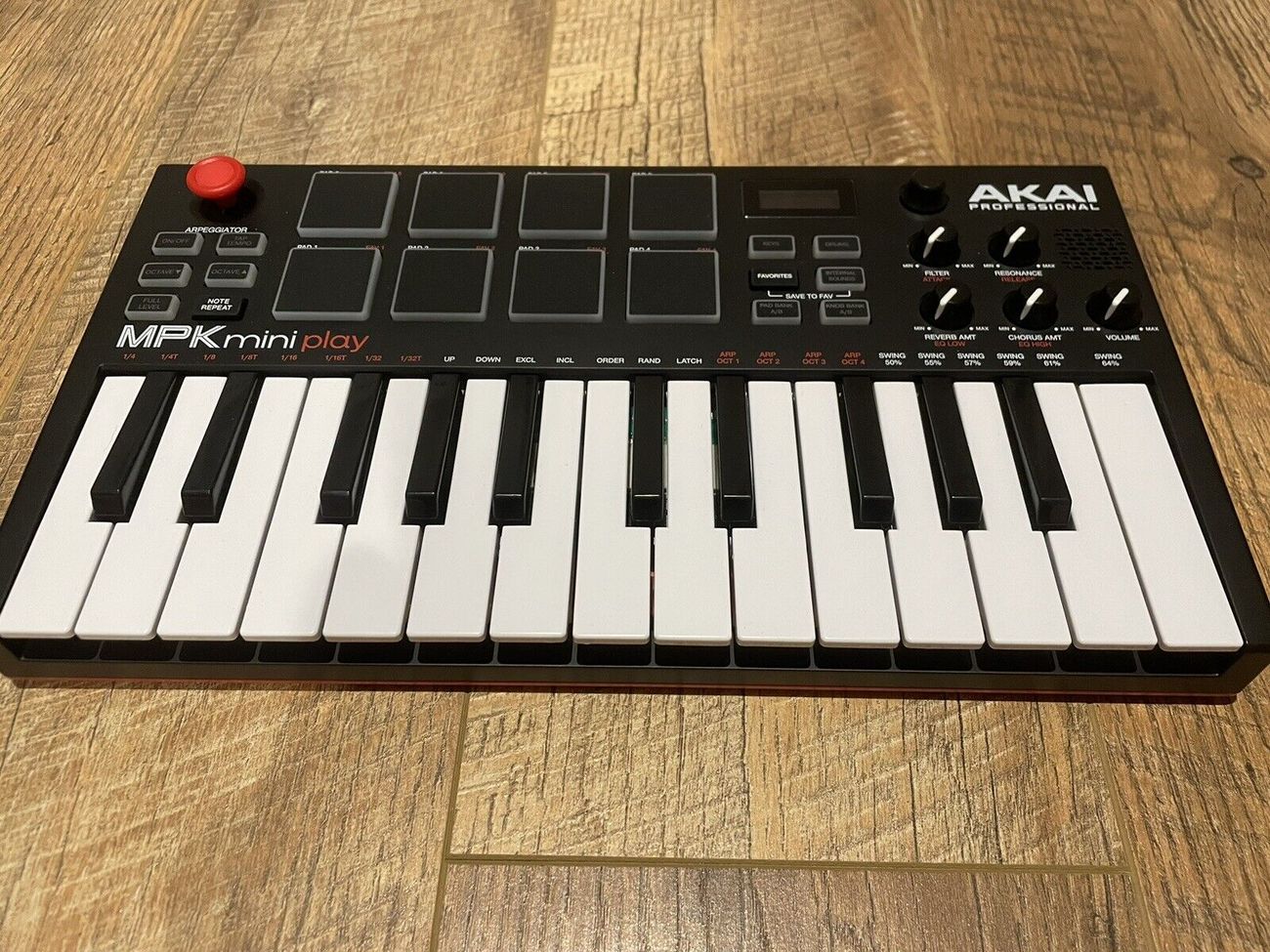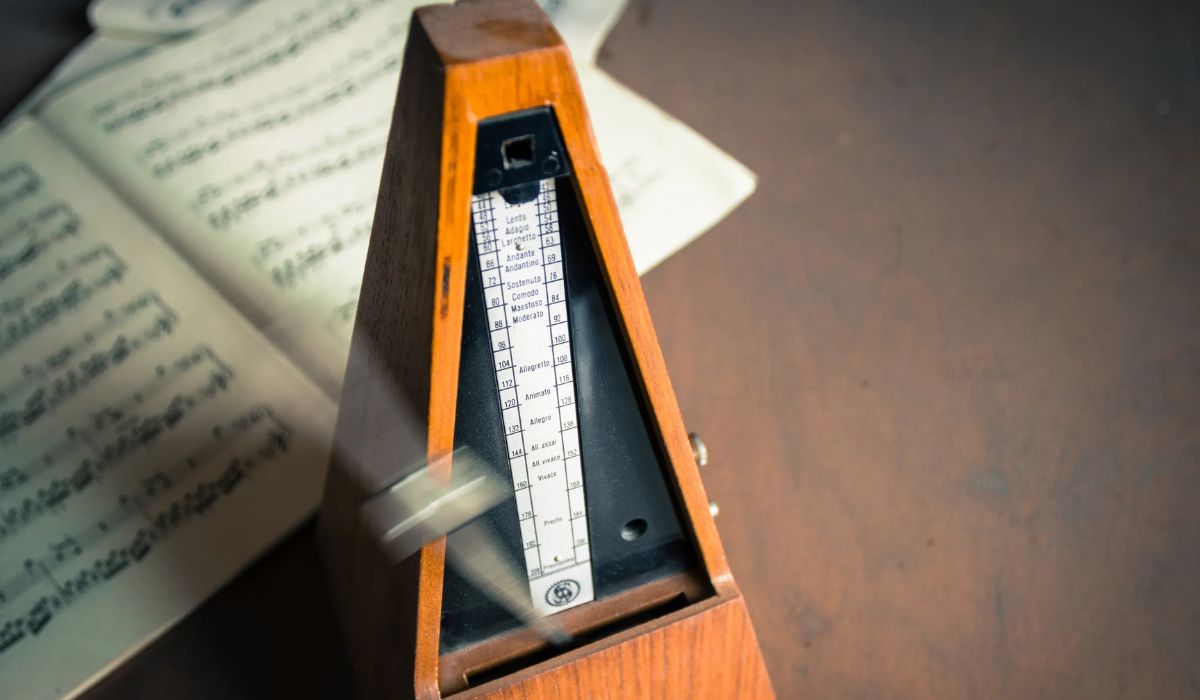Home>Production & Technology>Metronome>How To Align Metronome With Drums Real Band


Metronome
How To Align Metronome With Drums Real Band
Published: January 13, 2024
Learn how to properly align your metronome with your drums in a real band setup. Find out the best techniques and tips to improve your rhythm and timing.
(Many of the links in this article redirect to a specific reviewed product. Your purchase of these products through affiliate links helps to generate commission for AudioLover.com, at no extra cost. Learn more)
Table of Contents
Introduction
Welcome to the world of drumming, where rhythm and precision come together to create mesmerizing beats. As a drummer, one of the most important skills you need to develop is your sense of timing. Playing in time not only ensures that you stay in sync with the rest of the band, but it also adds a professional touch to your performance.
That’s where the metronome comes in. A metronome is a device or app that produces a steady beat at a specific tempo. It acts as a musical guide, helping musicians maintain a consistent tempo and timing while playing their instruments.
When it comes to drumming, the metronome is an invaluable tool for enhancing your timing skills and improving your overall musicality. By aligning the metronome with your drums in a real band setting, you will be able to groove with precision and confidence, making your performances tighter and more impactful.
In this article, we will delve into the world of metronome alignment with drums in a real band setting. We will explore the steps to effectively synchronize your drumming with the metronome, as well as provide tips and tricks to help you fine-tune your timing skills. So let’s dive in and unlock the secrets of how to align the metronome with drums in a real band!
Understanding the Metronome and its Importance in Drumming
Before we dive into the process of aligning the metronome with drums, let’s take a moment to understand the metronome’s significance in drumming and its role in developing your sense of timing.
The metronome acts as a precise timekeeper, providing a consistent beat for you to follow while playing the drums. It establishes a steady tempo and helps you maintain a consistent rhythm throughout your performance.
Here are a few reasons why the metronome is crucial in drumming:
- Improved Timing: Playing in time is one of the fundamental skills every drummer should develop. The metronome assists in honing your internal clock by providing a constant reference point. It helps you stay in sync with the rest of the band and maintain a steady groove.
- Building Precision: A metronome forces you to play with precision and accuracy. It exposes any timing inconsistencies and helps you identify weak spots in your playing. By practicing with a metronome, you can refine your technique and ensure that every stroke lands exactly where it’s supposed to.
- Musicality and Dynamics: The metronome is not just a mechanical timekeeping device; it also helps you develop a sense of musicality. By practicing different tempos and experimenting with dynamics, you can bring life and expression to your drumming. The metronome becomes your partner in creating dynamic and captivating performances.
- Playing with Confidence: An essential aspect of drumming is being able to play with confidence, especially in live band settings. When you have a solid internal time reference provided by the metronome, you can trust your playing and feel more comfortable taking risks and incorporating fills and embellishments into your performance.
By understanding the importance of the metronome in drumming, you can appreciate the impact it can have on your playing. Whether you are a beginner drummer or an experienced professional, incorporating the metronome into your practice routine can elevate your skills and take your drumming to new heights.
Steps to Align the Metronome with the Drums in a Real Band Setting
Aligning the metronome with the drums in a real band setting requires a systematic approach to ensure that everyone is playing in perfect harmony. Here are the steps to help you achieve metronome synchronization:
- Establish the Desired Tempo: Begin by determining the tempo at which you want to play the song. This can be done by either referring to the original recording or by discussing and agreeing upon the tempo with the rest of the band.
- Set the Metronome to the Desired Tempo: Once you have the desired tempo, set the metronome to match it. Most metronomes allow you to adjust the tempo manually or choose from a pre-set list of tempos. Ensure that the metronome is audible enough for everyone in the band to hear and follow.
- Sync the Drummer to the Metronome: The drummer should start playing along with the metronome, focusing on staying in time with the steady beat. It’s crucial for the drummer to listen intently to the metronome and adjust their playing accordingly. This step is vital to establish the foundation for the rest of the band.
- Gradually Add Instruments: Once the drummer has established a steady groove with the metronome, other band members can start adding their instruments as they listen to the metronome and drummer. Each member should pay close attention to the timing and ensure that they align their playing with the metronome and the drummer.
- Rehearse and Fine-Tune: As the band plays along with the metronome, it’s important to rehearse and fine-tune the synchronization. Focus on tight transitions between sections, precise accents, and maintaining a consistent groove. This process may require multiple rehearsals and adjustments until the band achieves a seamless synchronization with the metronome.
- Record and Analyze: Consider recording the band’s performance while playing with the metronome. This allows you to listen back and analyze the timing and synchronization. It helps to identify any areas where improvement is needed and provides valuable feedback for future practice sessions.
Remember, aligning the metronome with the drums in a real band setting requires patience, practice, and effective communication with your bandmates. It’s a collaborative effort that will enhance the overall musicality and professionalism of your performances.
Adjusting the Metronome to Match the Drummer’s Tempo
One of the critical steps in aligning the metronome with the drums in a real band setting is ensuring that the metronome matches the drummer’s tempo. Here are some guidelines to help you adjust the metronome effectively:
- Start with the Drummer’s Natural Tempo: Begin by having the drummer play a section of the song at their natural tempo without the metronome. This allows you to get a sense of their internal timing and groove.
- Experiment with Different Metronome Tempos: Set the metronome to a tempo slightly faster or slower than the drummer’s natural tempo. Start with broad adjustments and gradually fine-tune the tempo to find the best match.
- Observe the Drummer’s Response: Pay close attention to how the drummer responds to the metronome. If they struggle to keep up or feel restricted, the metronome may be set too fast. Conversely, if the drummer feels comfortable and can lock into the metronome easily, the tempo is likely well-matched.
- Adjust in Small Increments: Make small adjustments to the metronome tempo until it aligns perfectly with the drummer’s playing. It’s important to take it one step at a time to avoid disrupting the drummer’s flow and sense of groove.
- Consider the Musical Context: Keep in mind that the drummer’s tempo may vary depending on the song’s musical context or specific sections. Be open to adjusting the metronome tempo accordingly for different parts of the song.
- Collaboration and Feedback: Throughout this process, encourage open communication with the drummer. They may provide valuable input on the metronome tempo or suggest adjustments based on their playing style and personal preferences. Collaboration and feedback are key to achieving the perfect metronome-to-drummer tempo alignment.
Remember, the goal is to find a metronome tempo that supports and enhances the drummer’s playing while maintaining a consistent timing reference for the entire band. Be patient, persistent, and willing to experiment until you find the sweet spot where the metronome and the drummer’s tempo perfectly align.
Using Click Track or Metronome Apps
In today’s digital age, technology has made it easier than ever to access metronome functionalities through various click track or metronome apps. These apps offer a range of features and customization options that can greatly assist in aligning the metronome with the drums in a real band setting. Here are some benefits and tips for using click track or metronome apps:
- Wide Selection of Sounds and Metronome Styles: Click track or metronome apps often provide a variety of sound options, allowing you to choose different metronome sounds that suit your preference and musical style. You can select from traditional click sounds, drum sounds, or even custom sounds to add more personality to your practice sessions.
- Flexible Tempo Adjustments: These apps usually offer precise tempo adjustments with the ability to fine-tune the tempo to match the drummer’s playing. You can easily increase or decrease the tempo with a simple swipe or tap on the screen, making it convenient for on-the-fly adjustments during rehearsals or performances.
- Accents, Subdivisions, and Time Signatures: Many click track apps allow you to add accents, subdivisions, and even change time signatures. This gives you the flexibility to practice complex rhythms and tricky sections of songs accurately with the metronome.
- Visual Feedback: Visual indicators, such as blinking lights or bouncing balls, provide a visual representation of the metronome beat. This can be particularly helpful for drummers who prefer visual cues in addition to auditory cues.
- Integration with Recording Software: Some click track apps can integrate seamlessly with recording software, allowing you to sync the metronome directly to your recording session. This feature ensures that the metronome and your drums are perfectly aligned in the final mix.
- Personalized Practice Sessions: Click track or metronome apps often offer features like programmable playlists, loop functionality, and session saving options. This allows you to create custom practice sessions tailored to your specific needs, helping you focus on challenging sections or specific time signatures.
To make the most of click track or metronome apps, it’s essential to explore and experiment with the available features. Take the time to understand how each feature can benefit your drumming and band rehearsals. Don’t hesitate to try different apps to find the one that best suits your needs and preferences.
Remember, while click track or metronome apps can be highly beneficial, it’s crucial to use them as a tool to enhance your musicality rather than solely rely on them. Developing your ability to internalize the beat and stay in time with the rest of the band is equally important.
So, embrace the convenience and versatility of click track or metronome apps, and let them assist you in aligning the metronome with the drums for seamless synchronization and musicianship.
Tips and Tricks for Successful Metronome Alignment with Drums
Aligning the metronome with the drums in a real band setting requires practice, patience, and attention to detail. Here are some tips and tricks to help you achieve successful metronome alignment:
- Start Slow and Gradually Increase Tempo: When first practicing with the metronome, start at a slow tempo and gradually increase the speed as you become more comfortable and proficient. This gradual progression allows you to build a solid foundation and develop a strong sense of timing.
- Focus on Subdivisions: Pay attention to subdivisions of the beat. Practice playing along with the metronome, emphasizing different subdivisions such as eighth notes, triplets, or sixteenth notes. This helps improve your internal timing and precision.
- Use Headphones: When rehearsing with the metronome in a band setting, consider using headphones or in-ear monitors. This allows you to hear the metronome clearly without interfering with other band members’ sound, ensuring synchronization without distractions.
- Experiment with Different Click Sounds: Most metronome devices or apps allow you to choose from various click sounds. Try different options and find the one that resonates with you and enhances your groove. Some drummers prefer a subtle click sound, while others may prefer a more pronounced sound.
- Practice with Different Time Signatures: Challenge yourself by practicing with different time signatures. This expands your rhythmic understanding and ability to adapt to various musical contexts. Start with simple time signatures like 4/4, and gradually incorporate more complex ones like 5/8 or 7/4.
- Take Breaks from the Metronome: While metronome practice is essential, don’t solely rely on it. Occasionally take breaks and practice without the metronome to develop your internal sense of timing. This allows you to feel the music intuitively and enhances your ability to play with phrasing and musical expression.
- Record and Analyze: Utilize recording technology to capture your practice sessions with the metronome. Listen back to your recordings and analyze your timing and synchronization. This helps identify areas for improvement and provides valuable feedback for refining your drumming skills.
- Play Along with Recorded Music: In addition to practicing with a metronome, play along with recorded music and try to lock in with the drummer’s timing. This simulates a real band setting and enhances your ability to groove and stay in sync with other musicians.
- Communicate and Collaborate: Effective communication with your bandmates is crucial for successful metronome alignment. Discuss tempos, feel, and nuances with the drummer and other musicians to ensure everyone is on the same page and working towards a cohesive sound.
- Stay Relaxed and Have Fun: Lastly, remember to stay relaxed and enjoy the process. Playing with a metronome can be challenging at first, but with practice, it becomes second nature. Embrace the journey, stay positive, and have fun while striving for metronome alignment.
By incorporating these tips and tricks into your practice routine, you’ll gradually enhance your metronome alignment skills and elevate your drumming to a whole new level of precision and musicality.
Conclusion
Aligning the metronome with the drums in a real band setting is a skill that every drummer should strive to develop. It not only ensures precise timing and synchronization within the band but also adds a level of professionalism and musicality to your performances. By following the steps and implementing the tips and tricks mentioned in this article, you can enhance your metronome alignment skills and take your drumming to the next level.
Remember that mastering metronome alignment is a gradual process. It requires patience, practice, and effective communication with your bandmates. Start by understanding the metronome’s importance in drumming and how it helps improve your timing and precision. Then, learn how to adjust the metronome to match the drummer’s tempo and utilize click track or metronome apps to enhance your practice sessions.
As you dive into the world of metronome alignment, take advantage of the various features and customization options provided by click track or metronome apps. Experiment with different click sounds, subdivisions, and time signatures to expand your rhythmic repertoire. Record and analyze your practice sessions to identify areas for improvement. And above all, collaborate and communicate effectively with your bandmates to ensure a seamless synchronization.
By incorporating these techniques into your practice routine, you will gradually develop a strong sense of timing and groove, ultimately enhancing your drumming skills and elevating your performances. So embrace the metronome as a valuable tool, practice diligently, and let the rhythmic precision become second nature. With dedication and perseverance, you will master the art of metronome alignment and become a standout drummer in any real band setting.











